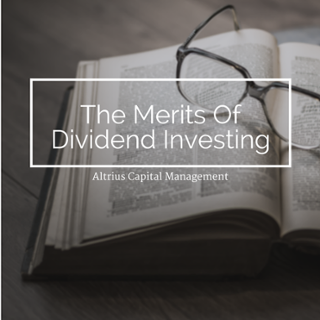Some Questions and Answers About This Year’s Market

Volatility has been on the rise in financial markets this year, and December seems to be unfolding as potentially the worst month of 2018 for stock market volatility. What’s unusual this year is that just about all asset classes are down at this point, which is a reversal of what we experienced last year in terms of both volatility and the return on our investments. In light of recent market trends, I answer some of the questions clients may be considering about the markets.
It feels like nothing is working right now in the markets. Should I be worried?
This year, the returns of most asset classes have been negative. Indeed, 90% of the 70 asset classes tracked by Deutsche Bank appear likely to deliver negative returns for 2018. However, I would also point out that this year’s disappointing market performance contrasts with 2017’s strong performance across most asset classes. In fact, the main thing that 2017 and 2018 have in common is that most asset classes moved in one direction—a pattern that’s not seen in a typical year. In 2017, only 1% of asset classes delivered negative returns, and the path was fairly smooth.
In a sense, this year’s broad weakness results from last year’s broad strength. Last year, markets seemed to overlook looming challenges—challenges I addressed in previous letters. This year, markets are finally reflecting those challenges in their prices. While no one likes this downturn, I’m not alarmed by it. It seems to me to be a rational reaction to uncertainty and overpriced U.S. stocks driven primarily by the tech sector (in particular FANG stocks such as Facebook, Amazon, Netflix and Google). Importantly, just as we’ve seen the past two days, I see the potential for an upturn once the challenges work themselves through. In addition, we have had exceptionally strong cumulative returns over the past decade in U.S. stocks and we were due for a difficult decline and bear market (20% market decline).
Why is my portfolio invested in foreign stocks which have underperformed this year in relation to U.S. companies?
One of the main reasons is pretty simple—no one can reliably and repeatedly predict which asset classes are going to outperform and which will trail over short or even intermediate periods. Also, a portfolio takes on lots of risk when it focuses on one type of asset class. With too large a concentration, you can’t afford to be wrong, whereas balancing numerous asset classes that perform differently smooths out the peaks and valleys of portfolio performance.
Still, I understand these “valleys” can be hard. Diversification has a great track record for working over the long run, but its results sometimes frustrate investors for extended periods of time. Nonetheless, I believe there is no better approach than owning a basket of investments that have different performance characteristics and sticking with that basic approach for the long run. This strategy is especially true as volatility has risen in the current market environment, making risk management more important.
As our clients know, one of our core priorities is cushioning their portfolios from volatility, especially big market declines. With that in mind, I don’t seek absolute returns at any price. Instead, I always strive to balance risks against the potential for returns. Thus, though international stocks have underperformed this year in relation to U.S. stocks, they outperformed last year and have the potential to do so in coming years as I’ve illustrated in numerous charts I’ve sent out in previous quarterly client communications.
How are you thinking about managing risk in this environment?
Taking prudent risk is a core component of being a successful long-term investor and this is foundational to what we do at Altrius. This means we take on portfolio risk when we have conviction that the return potential warrants doing so. U.S. growth/momentum stocks have been the place to be for many years, and my concerns over valuations have kept us from fully participating in their run. We must make decisions by having an awareness of where we are currently and keep a long-term, forward-looking perspective. Looking ahead, U.S. growth stocks, on a relative and absolute basis, are a very expensive sector compared to our less expensive, high dividend stocks (both U.S. and international). As a result, U.S. growth stocks present a poor return-versus-risk tradeoff. However, there’s a big world outside the Standard & Poor’s 500 Growth Index, with investments that look attractive to me in terms of their valuations and fundamentals. Both higher dividend/low price to earnings U.S. and international stocks appear to be a better place in which to take risks.
I understand that taking action is not always the right thing to do in choppy markets, but I still feel something needs to be done. What are you doing to protect my portfolio and why should I stay the course?
It is very well studied, with striking results, that one of the costliest mistakes people make with their portfolios is bailing out of their holdings at the wrong time and locking in losses or missing a rebound. It’s understandable that emotions may run high, sparking an investor’s retreat as we have seen this past month with investors selling billions in mutual fund and ETF assets. As a partner to our clients, one of the most valuable things we can do is to keep our clients invested. The market’s softening has created buying opportunities that we believe will pay off over the long run for investors who have the grit to stay invested and we are buying equities during this downturn.
Staying invested requires being comfortable with some level of uncertainty and short-term volatility. At the same time, I’ve sought to only take risks that I believe will eventually pay off. That’s part of what we have done when we reduced our core-bond exposure to the risks of rising rates over the past decade. We took advantage of our flexibility to invest opportunistically in less efficient, high-yield fixed-income sectors where we could still find some relatively attractive investments with a shorter duration in years than broader investment grade indices.
Having said this, if you have a nagging concern, a shorter-term cash or potential liquidity need, or any changes in your life that we should be aware of, please let us know so we can discuss and plan for your specific situation in greater detail.
Some Final Thoughts
If you’re seeing news about shaky markets and finding yourself asking similar questions to those I’ve posed above, please keep two things in mind as you consider both my responses and the responses of our financial advisors. One is the fact that throughout the most immediate turmoil, foreign stocks have been outperforming. Whether this is a blip or a turning point, time will tell. The other is that volatility isn’t just inevitable but is in fact necessary to our process. Long-term investors should almost relish these moments. If you look back in history to the scariest times to invest, you’d see those are the times that generated bargain sales that set up fundamental-minded investors for sound future success. That’s why our research attention right now is on assessing those bargains, not on getting defensive. When executed with discipline and patience, our investment process has proven its worth over multiple market cycles over the past two plus decades.
I deeply appreciate the trust you’ve placed in our firm over the past tumultuous two decades since our founding and I am continually humbled by the responsibility of the weight of this obligation and privilege. Thank you for your confidence which we hope to continually earn.


